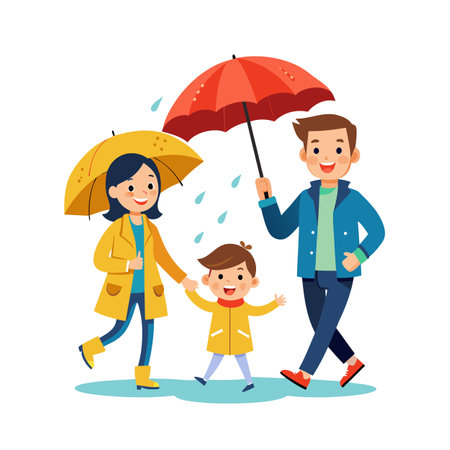Understanding Critical Illness Insurance for Kids
Critical illness insurance is a type of coverage designed to help families manage the financial impact if a child is diagnosed with a serious health condition. In the United States, this insurance usually provides a lump-sum payment when a child is diagnosed with specific illnesses such as cancer, heart conditions, or certain rare diseases. The idea is to give parents extra financial support so they can focus on their childs recovery without worrying as much about medical bills or other related expenses. This kind of policy is different from regular health insurance because it pays out cash directly to the family, not just to healthcare providers. For American parents, understanding how critical illness insurance works for kids is important because it addresses gaps that standard health plans might not cover—like travel costs for treatment, special therapy, or even lost income from taking time off work. Knowing what this insurance covers and how it fits into your familys needs can make a big difference during a challenging time.
2. Why Consider Critical Illness Insurance for Your Child?
As a parent in America, thinking about your child facing a serious illness is something none of us want to imagine. However, with the rising costs of healthcare in the United States, it’s important to be prepared for unexpected situations. Critical illness insurance for children can offer families much-needed financial protection and peace of mind when facing some of life’s toughest challenges.
Even if you have a solid health insurance plan, many American families are surprised by what isn’t covered. Deductibles, copays, out-of-network specialists, and non-medical expenses like travel or lodging can add up quickly during a child’s illness. Critical illness insurance pays out a lump sum upon diagnosis of a covered condition (like cancer or heart disease), which means you can use the money however your family needs—whether that’s covering medical bills, transportation costs, or even taking time off work to care for your child.
| Typical Expenses During Childhood Critical Illness | Covered by Health Insurance? | Covered by Critical Illness Insurance? |
|---|---|---|
| Deductibles & Copays | Partially | Yes |
| Travel/Lodging Near Hospital | No | Yes |
| Lost Income (Parent taking leave) | No | Yes |
| Experimental Treatments | No/Partial | Yes |
| Home Modifications (wheelchair ramps, etc.) | No | Yes |
The emotional stress of dealing with a child’s critical illness is hard enough without worrying about finances. Having critical illness insurance can help ensure that parents can focus on supporting their child through recovery instead of stressing over mounting bills. For many American families, this coverage is not just about money—it’s about maintaining stability and peace during an uncertain time.

3. What Does Critical Illness Insurance Typically Cover?
When considering critical illness insurance for children in America, it’s important to understand what these policies usually include. Critical illness insurance is designed to provide a lump-sum payment if your child is diagnosed with certain serious medical conditions. These typically include illnesses such as cancer, heart conditions (like congenital heart defects), major organ transplants, stroke, and sometimes even severe burns or paralysis. Coverage can vary quite a bit from one policy to another, so it’s essential to read the fine print and compare options.
Common Illnesses Covered
Most plans focus on high-cost, life-altering diagnoses. Cancer is the most commonly covered illness, but some policies also cover rare childhood diseases and neurological disorders. Since every insurer has its own list of qualifying conditions, always check what’s included—some will even specify which types or stages of an illness are eligible for a payout.
How Benefit Payout Works
If your child is diagnosed with one of the covered illnesses, you’ll receive a lump-sum cash benefit. This money can be used however your family needs—whether that’s paying for out-of-network specialists, travel expenses for treatment, or even everyday bills if you need to take time off work. The payout process usually requires a formal diagnosis and some paperwork from your child’s healthcare provider. Once approved, the funds are typically paid directly to you rather than the medical provider.
Plan Differences Across the United States
The specifics of what’s covered—and how much you’ll pay in premiums—can change depending on where you live and which insurance company you choose. Some states have stricter regulations about what must be included in a policy, while others give insurers more flexibility. It’s also common for plans to offer different levels of coverage at different price points. As a parent new to this kind of insurance, it’s smart to ask questions about pre-existing conditions, waiting periods before coverage kicks in, and whether your plan can be renewed as your child grows up.
Key Takeaway
No two critical illness insurance policies are exactly alike, so do your homework before choosing one for your child. By understanding what’s typically covered and how payouts work, you’ll be better prepared to select a plan that fits your family’s unique needs.
4. Key Benefits and Potential Drawbacks
When considering critical illness insurance for children in America, it’s important to weigh both the advantages and the possible downsides before making a decision. Below is an overview to help families understand what they can expect from this type of coverage.
Major Benefits for Families
- Financial Protection: A lump-sum payout can help cover out-of-pocket expenses not covered by regular health insurance, such as deductibles, travel costs for specialized treatment, or lost income if parents need to take time off work.
- Peace of Mind: Knowing you have an extra layer of support allows parents to focus on their child’s recovery rather than worrying about unexpected bills.
- Flexible Use of Funds: The benefit payment isn’t restricted to medical costs—it can be used however your family needs, including everyday living expenses during a difficult time.
- Affordability: Premiums for child policies are often lower than those for adults, making it more accessible for many American families.
Potential Drawbacks to Consider
- Coverage Limitations: Not all illnesses are covered; typically, only certain specified conditions like cancer or heart disease qualify for a payout.
- Payout Restrictions: Some policies may have waiting periods or exclusions for pre-existing conditions, which could delay or prevent receiving benefits.
- No Cash Value: Unlike some other types of insurance, most critical illness policies do not build any cash value over time.
- Added Financial Commitment: Even though premiums may be affordable, this is still an additional expense that families must budget for alongside existing health insurance.
Pros and Cons at a Glance
| Pros | Cons |
|---|---|
| Lump-sum payout for covered illnesses | Covers only specific illnesses listed in the policy |
| Flexible use of funds (not just medical bills) | No cash value accumulation |
| Affordable premiums for children | Additional cost on top of regular health insurance |
| Reduces financial stress for parents during crisis | Payouts may be subject to waiting periods/exclusions |
A Balanced Approach Is Key
Ultimately, deciding whether critical illness insurance for children is right for your family depends on your individual circumstances and priorities. It offers strong peace of mind and financial protection in worst-case scenarios, but it’s crucial to read the fine print and make sure the benefits outweigh the limitations for your unique needs.
5. How to Choose the Right Plan for Your Family
Choosing the best critical illness insurance plan for your child can feel overwhelming, especially if you’re new to this type of coverage. Here are some helpful tips and key questions to guide you through the process and make sure you pick a policy that fits your family’s needs.
Tips for Evaluating Policy Options
- Compare Coverage: Look at what illnesses are covered by each policy. Some plans may cover only a few conditions, while others offer broader protection.
- Benefit Amount: Consider how much the plan will pay out if your child is diagnosed with a covered illness. Make sure it would be enough to help with both medical costs and everyday expenses.
- Waiting Periods: Check if there’s a waiting period before the coverage starts or before certain illnesses are included.
- Premium Costs: Balance affordability with adequate coverage. Sometimes the cheapest plan doesn’t offer the protection your family truly needs.
Questions to Ask Insurers
- What conditions are specifically included or excluded?
- Is there a maximum payout, and how is it paid?
- If my child recovers, does the policy continue or end?
- Are there any age restrictions for applying or renewing?
What to Look For in the Fine Print
- Definitions of Illnesses: Policies may have very specific definitions for what counts as a “critical illness.” Read these carefully so there are no surprises later.
- Exclusions: Look for any situations where the insurer won’t pay out—like pre-existing conditions or illnesses diagnosed shortly after getting the policy.
- Renewal Terms: Some policies might not be renewable after a claim or once your child reaches a certain age.
Your Family’s Unique Needs Matter
No two families are exactly alike, so take time to consider your own situation—including health history, budget, and peace of mind. If you’re unsure, don’t hesitate to talk with an insurance agent who understands American healthcare and can explain everything in plain language. Being thorough now means more security for your child and less stress if you ever need to use the policy.
6. Real Stories: How Critical Illness Insurance Helped American Families
Hearing real-life experiences can make the benefits of critical illness insurance for children much clearer. Here are a few short examples from American families who faced tough times and found support through their child’s policy.
The Johnson Family: Covering Unexpected Costs
When their seven-year-old daughter Emily was diagnosed with leukemia, the Johnson family was overwhelmed—not just emotionally, but financially too. Even though they had health insurance, there were still travel costs to a specialized hospital, lost wages from taking time off work, and extra childcare for their other children. Their critical illness insurance payout helped them pay these bills without going into debt.
A Single Mom’s Testimonial
Linda, a single mom in Ohio, said, “My son needed surgery and long-term care after his diagnosis. The money from our critical illness policy let me focus on being with him instead of worrying about missing rent or groceries. It was a true lifesaver.”
The Smiths: Supporting Recovery at Home
After eight-year-old Noah suffered a stroke, his family needed to make their home wheelchair accessible and hire a part-time nurse for his rehabilitation. The funds from their critical illness policy made it possible to adapt their living space and provide Noah with the best recovery environment right at home.
Why These Stories Matter
These real stories show that while no one wants to imagine facing a child’s serious illness, having financial support can make a huge difference. Critical illness insurance doesn’t just pay medical bills—it helps families stay afloat during one of the toughest challenges they’ll ever face.
7. Frequently Asked Questions About Childrens Critical Illness Insurance
When considering critical illness insurance for children, American parents often have many questions. Here are some of the most common concerns, answered simply to help you make an informed choice.
What exactly does childrens critical illness insurance cover?
This type of insurance pays a lump sum if your child is diagnosed with a covered serious illness, such as cancer, heart conditions, or other specified diseases. The payout can be used for any purpose—medical bills, travel for treatment, or everyday expenses while you focus on your childs recovery.
Is this coverage expensive?
The cost varies depending on the insurer and the amount of coverage you choose, but plans for children are generally more affordable than adult policies. It’s important to compare options and see what fits your family’s budget.
Doesn’t my health insurance already cover these illnesses?
Health insurance covers treatment costs, but critical illness insurance provides a cash payment directly to you. This money can help with out-of-pocket expenses, lost income from time off work, or anything else your family needs during a difficult time.
How do I know if my child qualifies?
Most policies require that your child be within a certain age range (often newborn through late teens) and not have pre-existing serious illnesses at the time of application. Insurers may ask health-related questions but usually do not require medical exams for children.
Can I add this coverage to my own policy?
Some insurers allow you to add a child rider to your own critical illness policy. Others offer separate standalone plans just for children. It’s best to ask your agent about all available options.
What happens if I never use the coverage?
If your child never faces a covered illness, there is no payout—similar to car or home insurance. Some policies may offer partial refunds or conversion options when your child reaches adulthood; ask about these features when shopping for a plan.
Should I get critical illness insurance for my child?
This is a personal decision. Consider your financial situation, family medical history, and peace of mind. If you want extra protection against unexpected health crises and their financial impact, this coverage may be worth exploring further.


